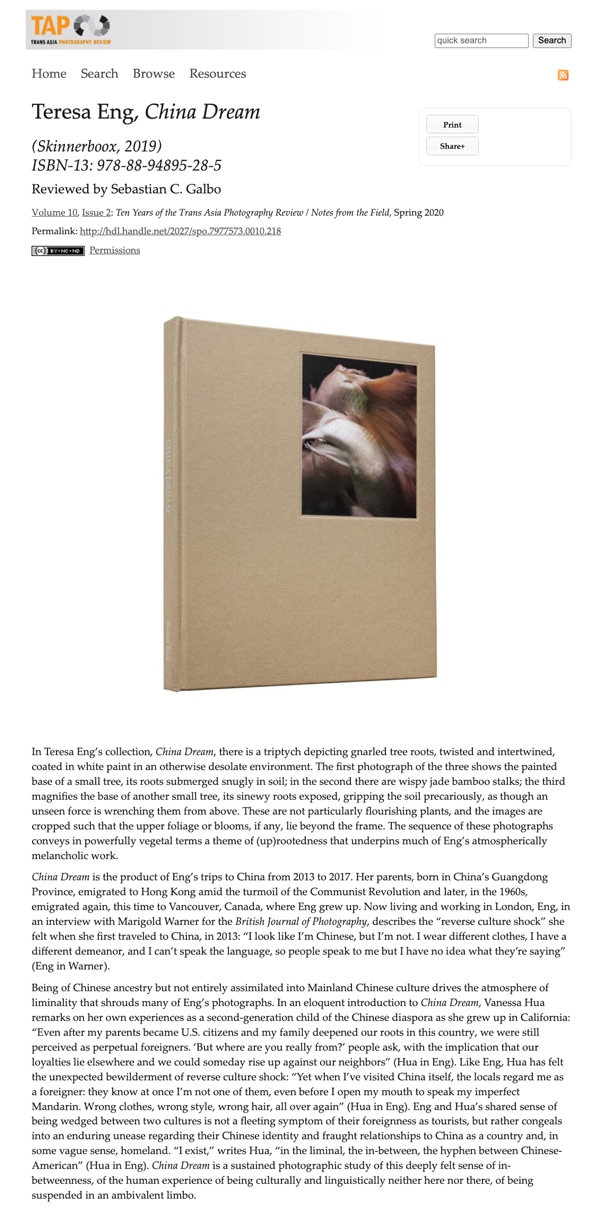China Dream is reviewed in TransAsia photographic review in their Ten Year anniversary issue.
Below is an excerpt from Sebastian C. Galbo’s article:
“China Dream’s visual poignancy is derived, in part, from Eng’s subdued palette, a distinct coloration of crepuscular purples, smog-tinted blues, and hazy grays that create an atmosphere befitting liminality. A granularity, like a fine soot, suffuses the photographs, which Eng attributes to her first visit to Chongqing (where she completed a residency). Eng, having walked into a “valley of dust,” was overwhelmed by the city’s air pollution — “seeing all of this dust definitely informed my aesthetic” (Eng in Warner). Her collection, however, will likely undermine most viewers’ expectations — naturally, dreams of China, a nation of 1.4 billion people sprawled over a 3.7-million-square-mile area, might be thought to conjure up distorted images of incessant movement, thronged roadways, and the dense miasma of pollution.
Eng succeeds in parrying such expectations by photographing China during moments of almost spectral tranquility, by countering density with vacancy, and by displacing flux with stillness. To create an atmosphere of liminality, she photographs typically unpeopled places, hushed highways, and facades of seemingly empty high-rise apartment buildings. Construction cranes and workboats, too, appear to be utterly still, the surrounding areas devoid of people. Rather than photographing skyscrapers, Eng depicts urban growth as a ponderous shadow. In one photograph, clusters of urban space are obscured by deep gray penumbras, with buildings coalesced into towering, overlapping monoliths. In another image, a swath of dense urban housing and businesses is illuminated by a white glare, sharply outlining the neighborhood against the stark blackness of night. The utter loneliness of these urban and sometimes sylvan places mirrors Eng’s foreignness.”

